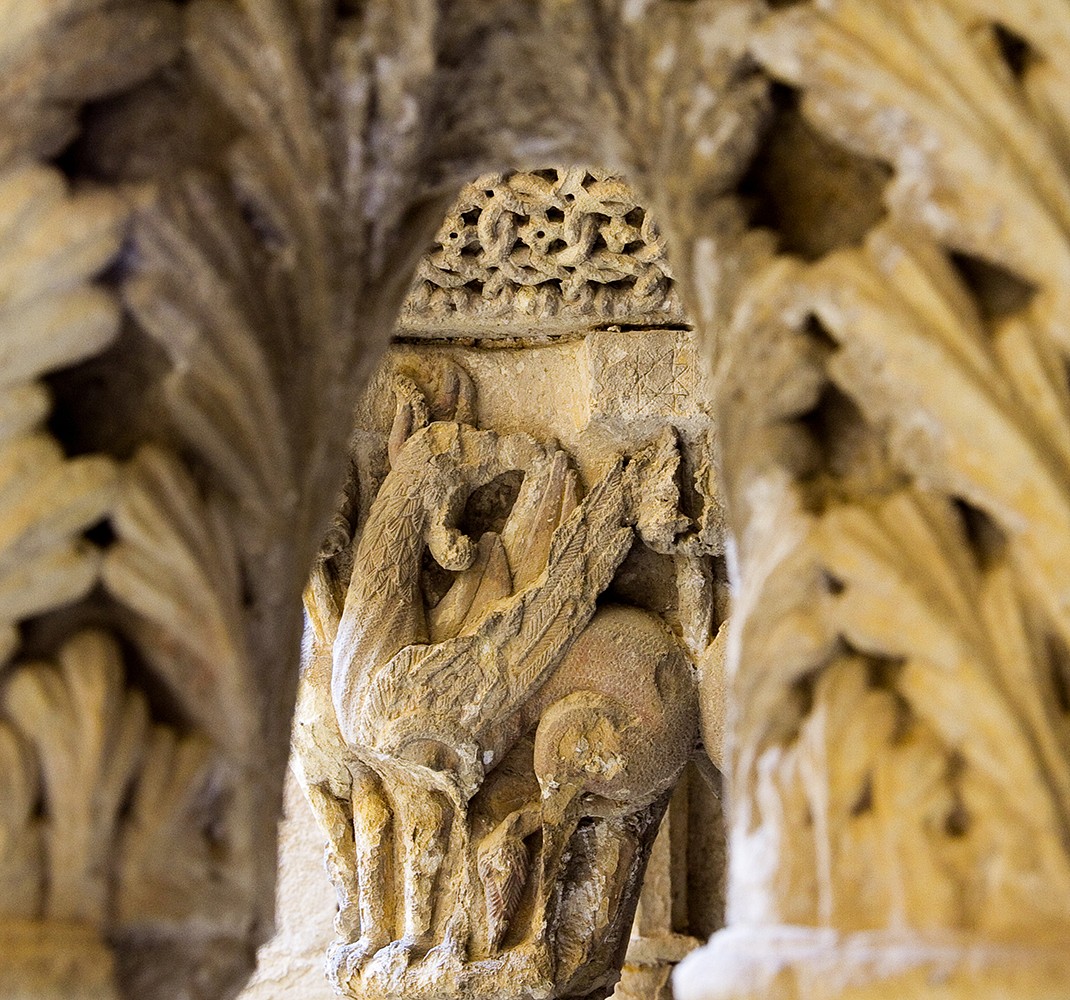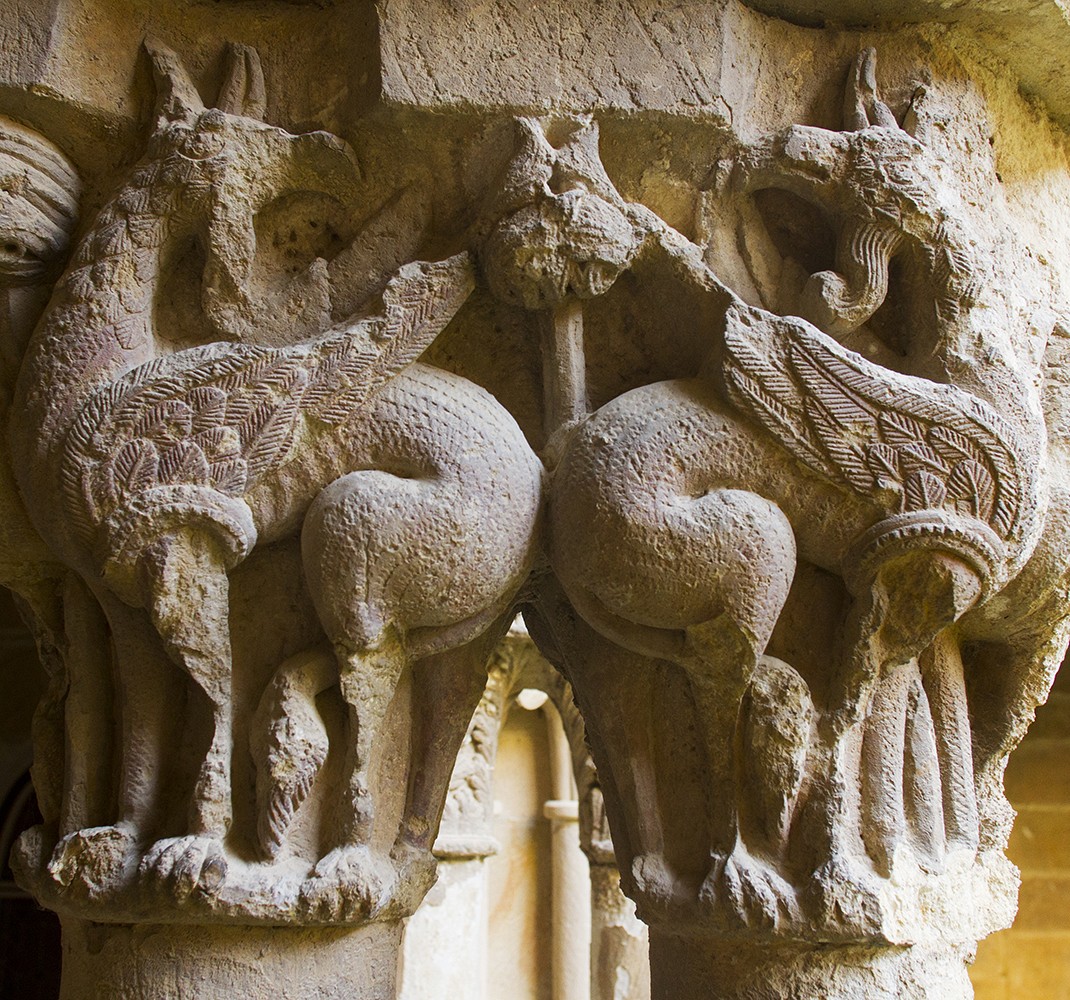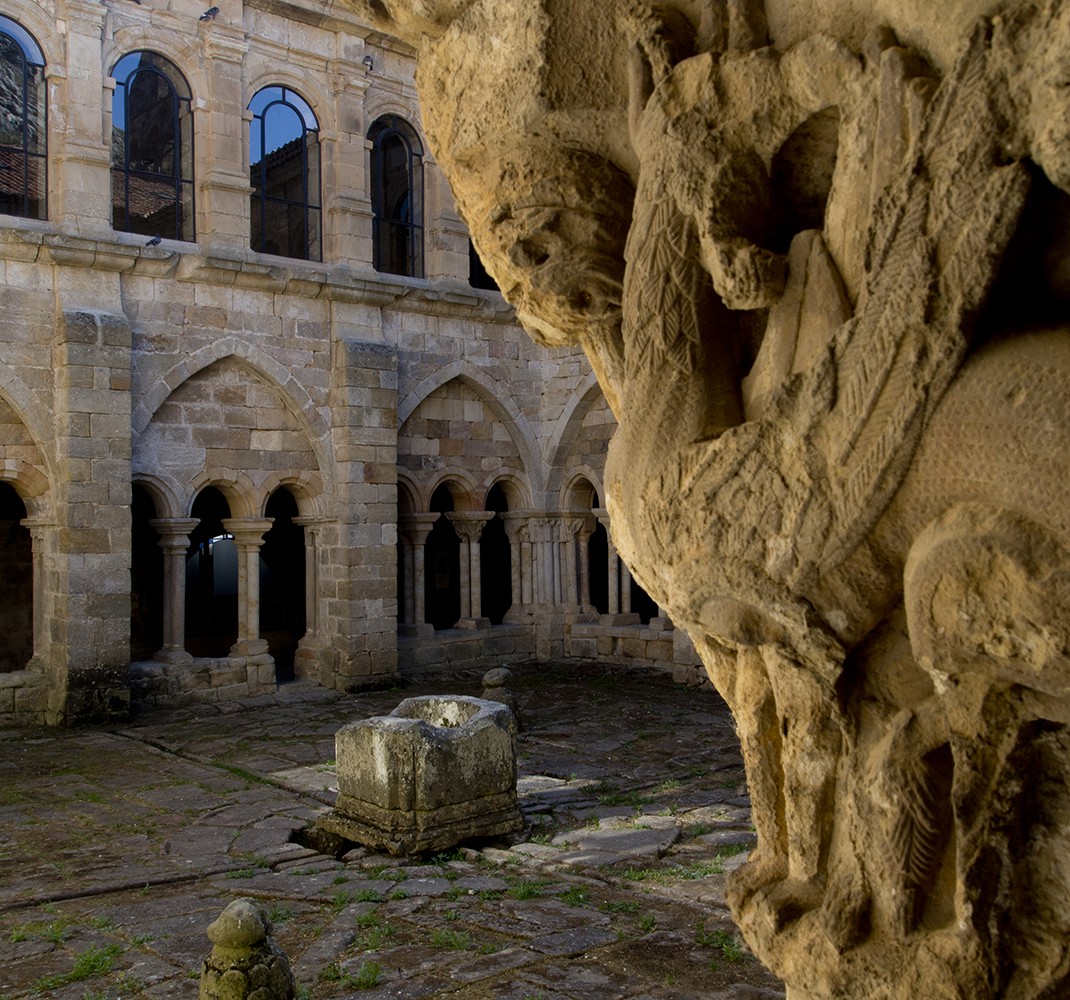Capital of the griffins
Romanesque.
End of the 12th century.
Location:
North gallery of the cloister.
It is a double capital decorated by six griffins faced with turned heads. It was one of the few baskets that still remains in its original location, saving both from looting and the transfer of the pieces to the National Archaeological Museum. The griffin is a hybrid animal made up of the eagle and the lion. It is one of the main animals that appear in medieval stone bestiaries. These catalogs of beasts began to develop in antiquity, highlighting the book known as the Physiologist, a writing written by an anonymous author between the second and fourth centuries after Christ. Contains a set of descriptions of animals, plants, and rocks; most of the time accompanied by moral judgments. The book enjoyed great notoriety in the Middle Ages and many Christian authors copy it with the idea of reinforcing the Christianized moral aspects represented by animals, which in turn were used for the indoctrination of the faithful. This was one of the fundamental reasons why they were so successful in the Romanesque iconographic repertoire.
Another interesting aspect can be seen in the griffin wing, where we can see remains of polychrome. This indicates how the current image of Romanesque buildings, with the stone uncovered, was not the usual thing in the Middle Ages, where a large part of the walls of the buildings were whitewashed, using polychromy in some specific points.
In the upper part of the capital there is a cyma exceptionally decorated by an openwork basketwork composed of vegetable stems with rosettes in the center. The use of the trephine stands out, a stonecutting instrument used since ancient times that served to pierce the stone, favoring the openings in the rock.
Chronologically it is dated to the end of the 12th century. A moment of constructive boiling in which different masters are working on the ornamentation of the monastery. The author of this piece stands out for his ability to make zoomorphic motifs and fleshy plant lines, characteristics that are also observed in other baskets in the cloister and the church, highlighting the capital with the scene of a knight among leaves and birds, located in the arch that gives entrance to the current Chapel of Christ. It is the only figurative capital preserved in the church.





